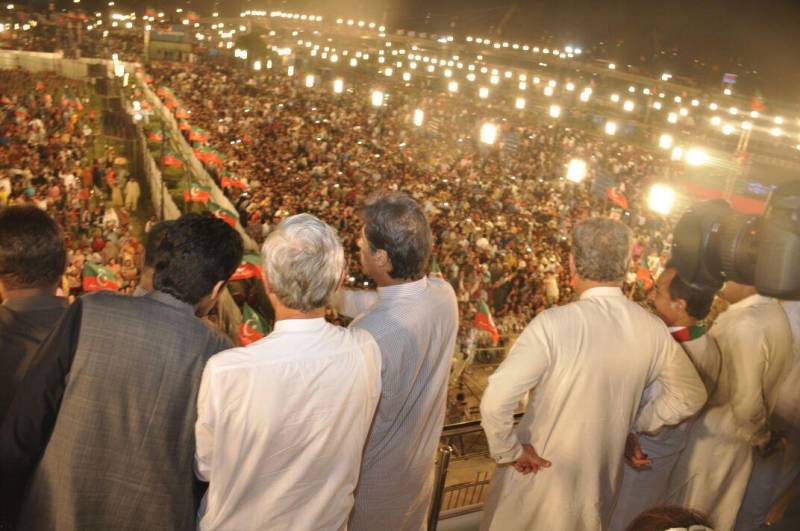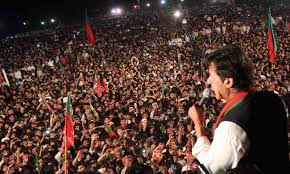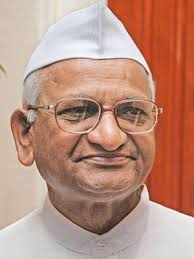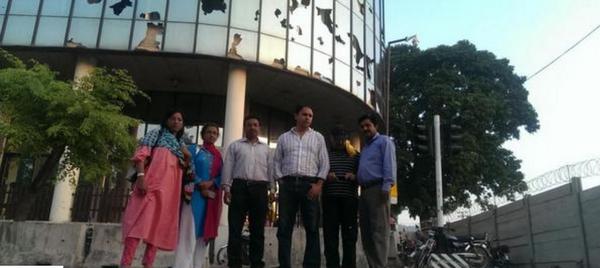
The PTI government has been concerned - if not obsessed - with media all along. The irony is that the media has suffered irreparable losses, to put it mildly, at the hands of this government. Arguably, the same 'team' is behind the making and breaking of Pakistan's media to a great extent, if we look at the cabinets of former President Gen (R) Pervez Musharraf and Prime Minister Imran Khan - and the overlaps between the ministers and assistants that they employed.

Credit for unlocking the potential of media in Pakistan squarely goes to Gen (R) Musharraf, of course.
It was he who allowed private investors to start TV channels and radio stations back in 2002. Javed Jabbar was given the task to form a mechanism to regulate this sector and he did the job very well. Jabbar, unfortunately, is missing in the PTI cabinet.
The party first came to power in KP in 2013. At that time, the party’s jalsas were hip on electronic media. Why so? Above all conspiracy theories, it remains a fact that the party had brought some changes in the organization of its jalsas to make them a media event. However, before 2010, its jalsas were as dull as those of other parties.
At that time, Anna Hazare launched a movement in India for political change. Interestingly enough, there were some striking similarities in the new form of PTI jalsas with those being held in neighboring India by then popular leader Anna Hazare.

A media analysis of the rise of both parties in India and Pakistan shows that the PTI followed the trends set up by Hazare's movement. The PTI started setting up media-friendly stages, inviting showbiz personalities, hiring DJs for composition of sound, facilitating mixed-gender gatherings and laying out chairs for their jalsas to give impressive looks on TV screens, etc.
Hazare was already doing all this to make sure his public gatherings and hunger strike events were powerfully presented on media.
The PTI opened the way to increase influence of entertainment media on news and current affairs channels.
I believe that when news and analysis travel to TV screens from newspapers, the original material is heavily stretched out to the limits, as one medium is vertical and the other horizontal.
But mixing of entertainment with political messaging makes it a heady brew. Unqualified and unprofessional electronic media executives of that time were oblivious to these media nuances and jumped on the PTI bandwagon. It was all unnatural, as no one can score a six on every ball.
Those that tried to avoid the popularity wave were dealt with brutally. Geo TV's office was attacked many times by PTI members during their long stays on Islamabad's Constitution Avenue and D-Chowk.

The signs of the time were visible but TV executives were not able to look beyond their limited interests. Gradually, the worst has happened. TV channels are being closed down, their employees are committing suicide due to poverty. The media's credibility has vanished, and their representatives are told in the PM House during live programs that they are liars, corrupt and so on.
It is about time electronic media looked back and reset its ranks in this battle for its survival.

Credit for unlocking the potential of media in Pakistan squarely goes to Gen (R) Musharraf, of course.
It was he who allowed private investors to start TV channels and radio stations back in 2002. Javed Jabbar was given the task to form a mechanism to regulate this sector and he did the job very well. Jabbar, unfortunately, is missing in the PTI cabinet.
The party first came to power in KP in 2013. At that time, the party’s jalsas were hip on electronic media. Why so? Above all conspiracy theories, it remains a fact that the party had brought some changes in the organization of its jalsas to make them a media event. However, before 2010, its jalsas were as dull as those of other parties.
At that time, Anna Hazare launched a movement in India for political change. Interestingly enough, there were some striking similarities in the new form of PTI jalsas with those being held in neighboring India by then popular leader Anna Hazare.

A media analysis of the rise of both parties in India and Pakistan shows that the PTI followed the trends set up by Hazare's movement. The PTI started setting up media-friendly stages, inviting showbiz personalities, hiring DJs for composition of sound, facilitating mixed-gender gatherings and laying out chairs for their jalsas to give impressive looks on TV screens, etc.
Hazare was already doing all this to make sure his public gatherings and hunger strike events were powerfully presented on media.
The PTI opened the way to increase influence of entertainment media on news and current affairs channels.
I believe that when news and analysis travel to TV screens from newspapers, the original material is heavily stretched out to the limits, as one medium is vertical and the other horizontal.
But mixing of entertainment with political messaging makes it a heady brew. Unqualified and unprofessional electronic media executives of that time were oblivious to these media nuances and jumped on the PTI bandwagon. It was all unnatural, as no one can score a six on every ball.
Those that tried to avoid the popularity wave were dealt with brutally. Geo TV's office was attacked many times by PTI members during their long stays on Islamabad's Constitution Avenue and D-Chowk.

The signs of the time were visible but TV executives were not able to look beyond their limited interests. Gradually, the worst has happened. TV channels are being closed down, their employees are committing suicide due to poverty. The media's credibility has vanished, and their representatives are told in the PM House during live programs that they are liars, corrupt and so on.
It is about time electronic media looked back and reset its ranks in this battle for its survival.
